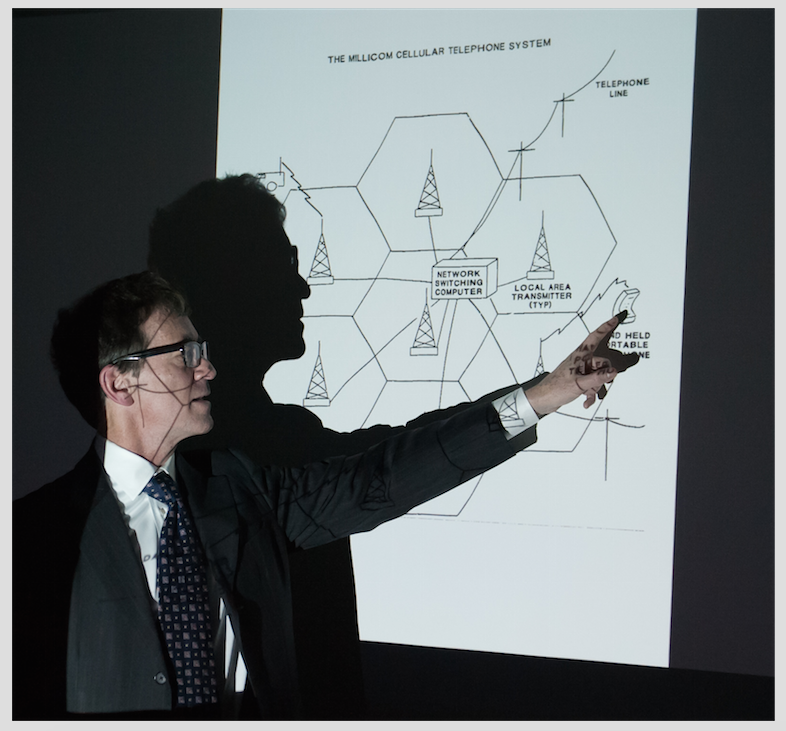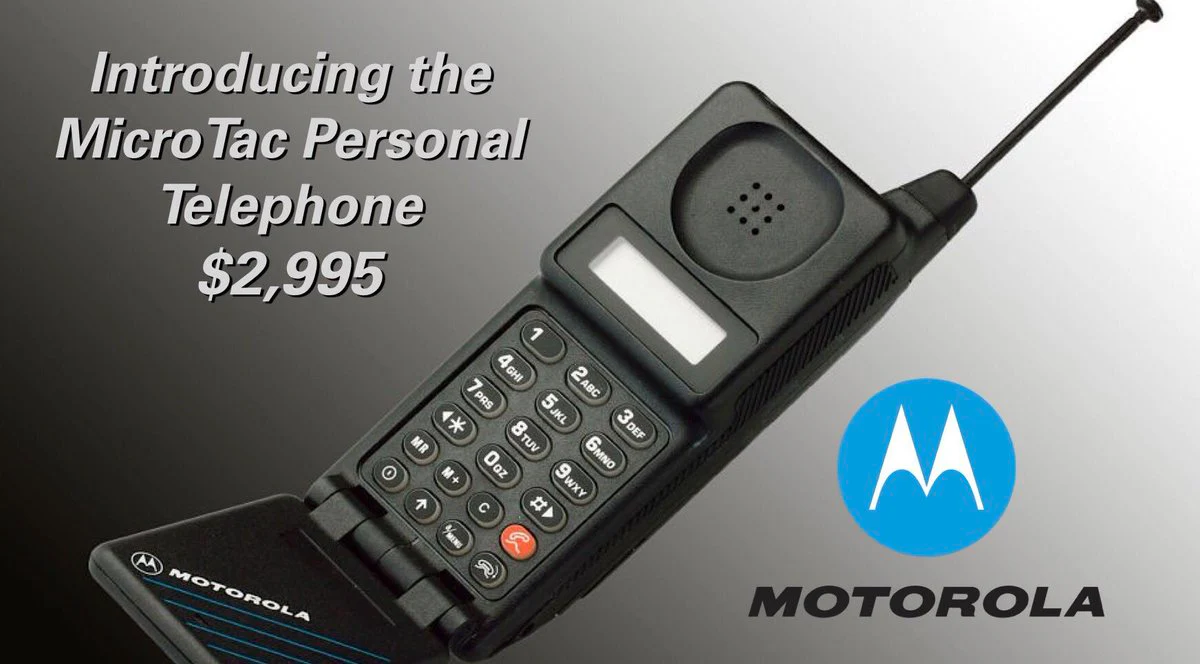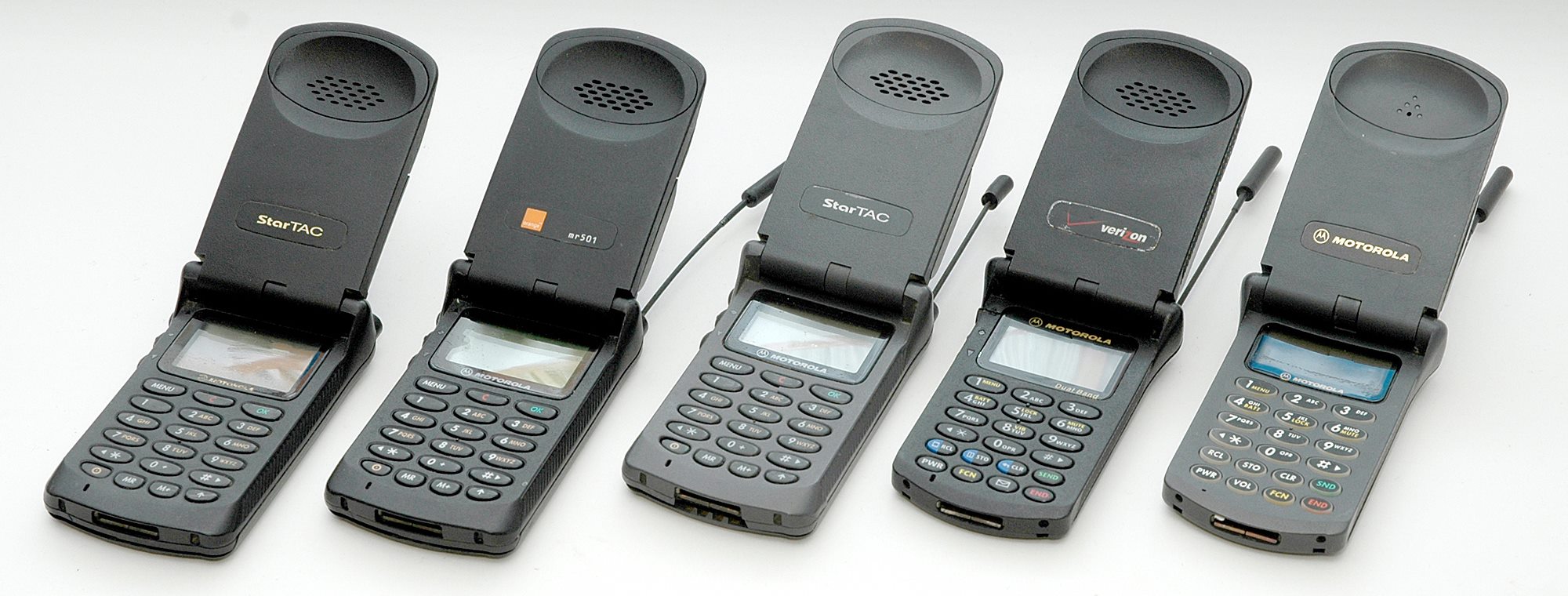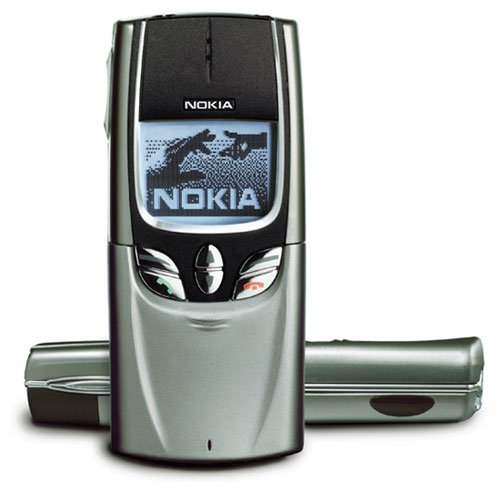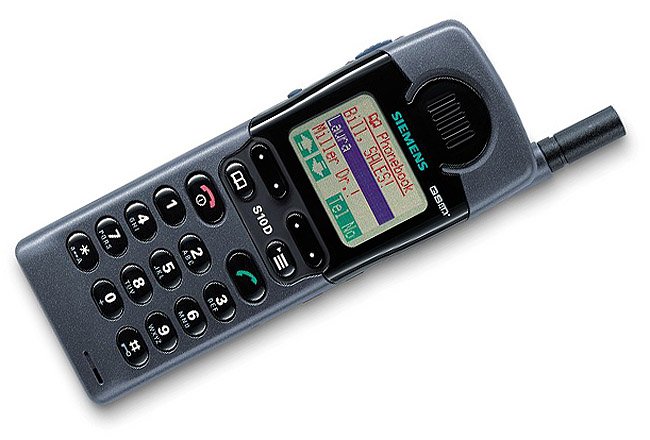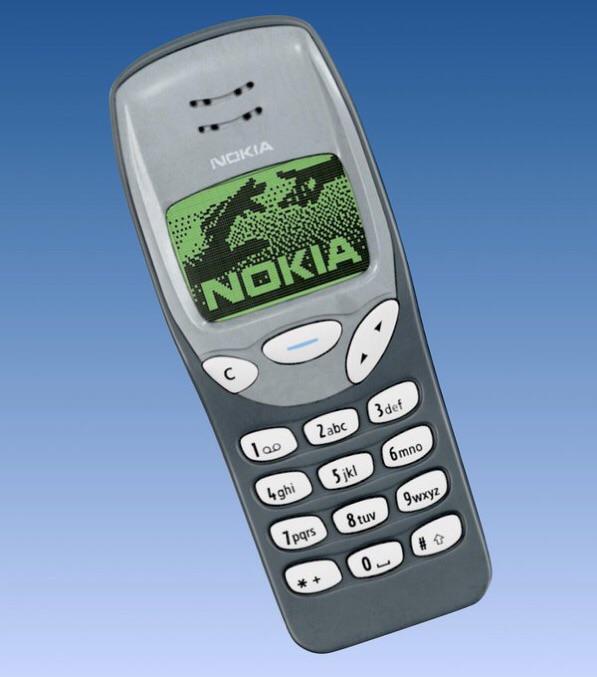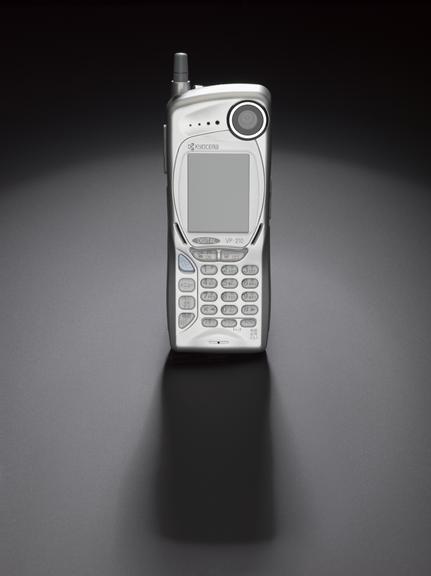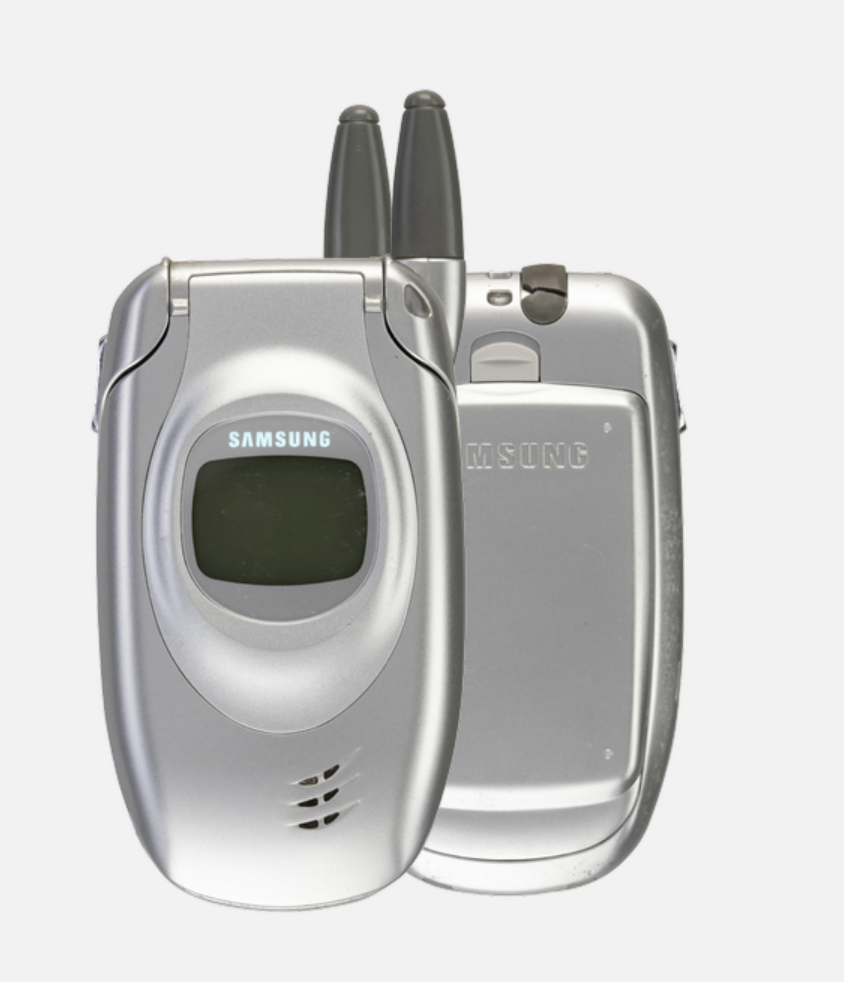Martin Cooper reflects on making the world’s first phone call during an interview with Al Pisano. Video courtesy of the University of California Television.
First Mobile Call on a Handheld Phone
On April 3, 1973, Motorola’s Martin Cooper made the first mobile phone call using the DynaTAC prototype. Weighing 2.5 pounds and 10 inches tall, it was a brick with 30 minutes of talk time, revolutionizing portable communication.
Millicom’s Cellular Pioneer
In 1984, Millicom launched one of the first commercial cellular networks in Sweden, using Nordic Mobile Telephone (NMT) technology. This compact network enabled smaller, lighter phones by improving signal efficiency and shrinking device size requirements.
Kevin Kimberlin, investor and advisor to Millicom, stands in front of a graph of Millicom’s cellular telephone system.
Motorola MicroTAC advertisement. Photo courtesy of the Westport Tech Museum.
Analog to Digital Leap
The Motorola MicroTAC (1989) introduced digital signal processing, reducing phone size to 12 ounces and enabling a flip-phone design. Its foldable form factor set a trend for compact mobiles.
Touchscreen Teaser
The Motorola StarTAC (1996), at 3.1 ounces, was the smallest mobile yet and the first clamshell phone. Its sleek design, vibration alert, innovative form, and function make the phone pocket-friendly.
Array of Motorola StarTac models.
The Nokia 8810 mobile phone. Credit: Wikipedia.
Antenna Vanishes
The Nokia 8810 (1998) eliminated the external antenna, using internal antenna technology. At 4.7 ounces and 4.8 inches, its slim, curved design pushed mobile phones toward minimalist aesthetics.
Smartphone Seed
The Ericsson R380 (2000) blended PDA and phone functions in a 5.8-ounce touchscreen device. The Symbian OS and flip-out keyboard pioneered smartphone functionality in a compact form.
Ericsson R380s mobile phone.
The Siemens S10, the world’s first color phone. Photo courtesy of the Mobile Industry Review.
Color Screen Breakthrough
The Siemens S10 (1997) introduced one of the first color displays in a mobile phone. At 7 ounces, its vibrant screen added functionality without bulking up the form factor.
Battery Life Boost
The Nokia 3210 (1999) used lithium-ion batteries, which are lighter and longer-lasting than nickel-based ones. At 5.4 ounces, it offered weeks of standby time, enhancing portability and usability.
On March 18, 1999, the Nokia 3210 mobile phone was released.
The Kyocera VP 201 was the first mobile colour videophone. Photo courtesy of the Science Museum Group.
Camera Integration
The Kyocera VP-210 (1999) was the first mobile with a built-in camera (0.11 megapixels). At 6.3 ounces, it merged photography with telephony, maintaining a compact size for its time.
Miniaturization Milestone
The Samsung SGH-T100 (2002), a flip phone at 3.2 ounces, used advanced circuit integration to shrink components. Its thin 0.7-inch profile and vivid TFT display showed how far size reduction had come.


